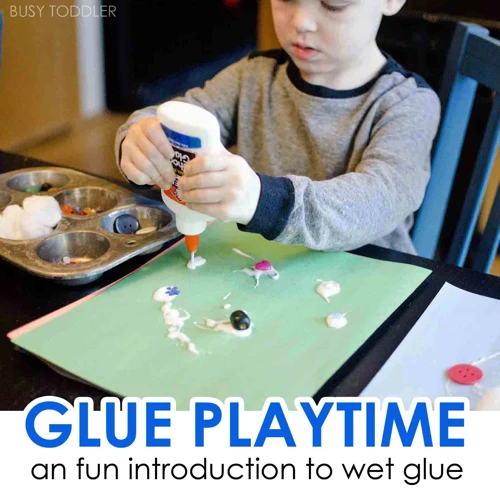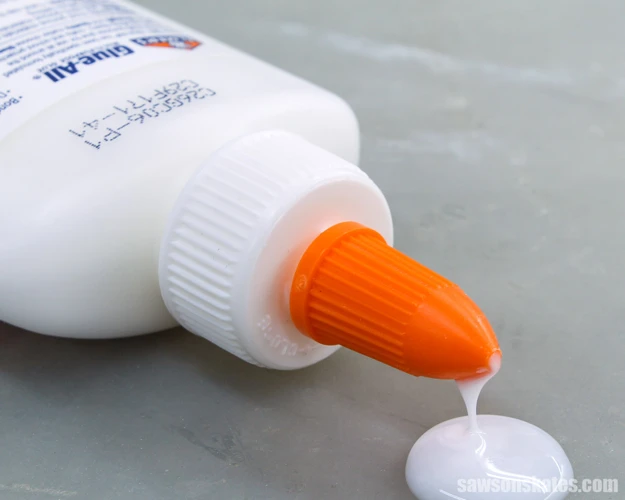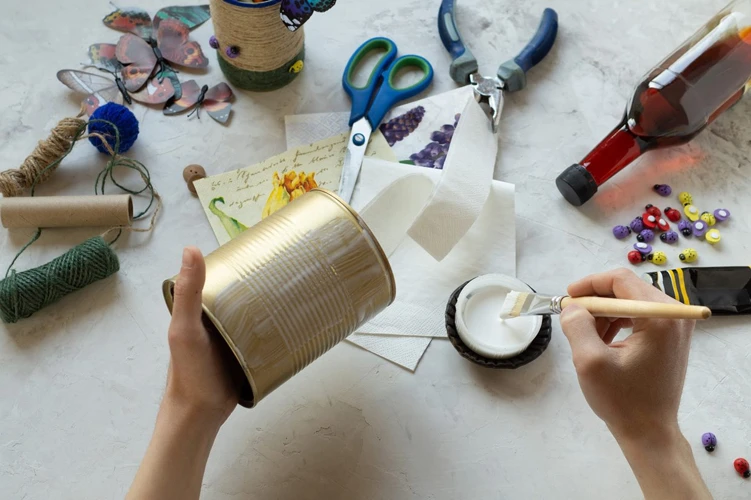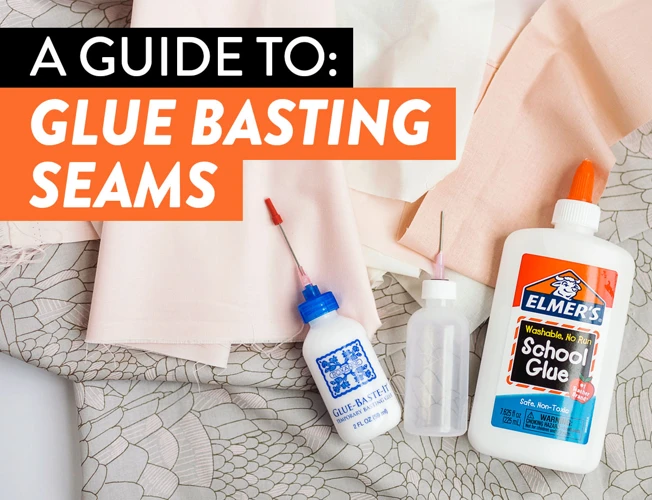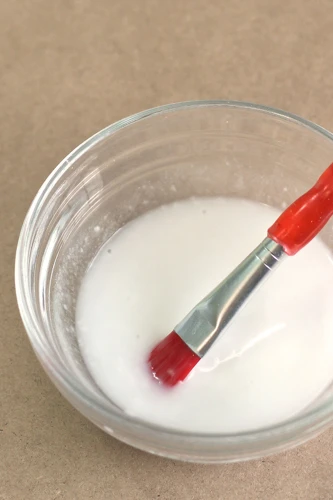Introduction
Are you tired of spending money on store-bought PVA glue, only for it to run out when you need it most? Do you want to create a homemade and cost-effective alternative without sacrificing quality? Look no further! In this article, we’ll guide you step by step on how to make your very own PVA glue at home using simple ingredients and household supplies. Follow along for a fun and rewarding DIY project that will save you money in the long run.
Welcome to the World of DIY PVA Glue!
| Welcome to the World of DIY PVA Glue! |
| Are you tired of spending money on store-bought glue for your crafting and DIY projects? Look no further than DIY PVA glue! This simple and affordable glue can be made from just a few ingredients that you likely already have in your home. Not only will making your own glue save you money, but it’s also a fun and satisfying project. |
| PVA glue can be used for a variety of purposes, such as paper mache, scrapbooking, and even woodworking. Understanding the uses and benefits of PVA glue is a must for any DIY enthusiast. Plus, by making your own glue, you can experiment with different variations to find the perfect recipe for your specific project needs. |
| So, gather your ingredients and get ready to dive into the world of DIY PVA glue! And if you’re interested in more DIY projects, check out our articles on how to use puzzle glue sheets and what the best spray glue is on the market! |
The above paragraph introduces readers to the world of DIY PVA glue, highlighting the many benefits of making your own glue at home. It also suggests some DIY projects that can be done using PVA glue and teasers readers with other articles they might be interested in. By providing a helpful link to articles such as how to use puzzle glue sheets and what the best spray glue is, readers are encouraged to stay on the site and explore more helpful DIY content.
What is PVA Glue?
If you’re new to the world of DIY projects and crafts, you may be wondering: what is PVA glue? Well, PVA glue is a popular adhesive that has a variety of uses in a range of applications. Also known as white glue, school glue, or Elmer’s glue, PVA glue is a water-based adhesive that is made from polyvinyl acetate. This versatile glue is often the go-to adhesive for crafting, woodworking, paper projects, and more. Understanding the properties and uses of PVA glue can help you make informed decisions about your adhesive needs.
Understanding PVA Glue and Its Uses
PVA glue is a versatile adhesive that has a wide range of uses. Understanding the properties of PVA glue is essential to determine if it is the right adhesive for your specific needs. Here are some of the main uses of PVA glue:
- Woodworking: PVA glue is a popular choice for woodworking because it dries clear and creates a strong bond that can withstand stresses and strains. It is also water-resistant, making it ideal for furniture and other wood projects that may be exposed to moisture.
- Paper and cardboard: PVA glue is ideal for paper and cardboard because it won’t wrinkle or damage the paper. Plus, it dries clear and does not leave any residue.
- Textiles: PVA glue is commonly used in textile projects as a fabric stiffener. It is a great solution for making fabrics hold their shape, which is especially useful when working with delicate fabrics like lace or tulle.
- Other crafts: PVA glue can also be used for many other craft projects. It can be used as a binder for homemade pastes or mixed with food coloring to create a colorful glue solution. It can be used as an adhesive for different materials like foam, beads, and plastic.
Whether you are looking to glue wood, paper, fabric, or other materials, PVA glue is an excellent adhesive choice. However, keep in mind that PVA glue may not be the right adhesive for every situation. If you need a super-strong bond, you may need to turn to a more heavy-duty adhesive like epoxy. If you need an adhesive that dries faster, consider using cyanoacrylate glue, also known as super glue. Additionally, if you are allergic to PVA glue, you may need to try a different type of adhesive that is non-irritating. Check out our guide to different types of glue to learn more about different adhesives and their properties.
Materials You’ll Need to Make PVA Glue
As with any DIY project, having the right materials is crucial to success. For making your own PVA glue, you’ll need a few specific ingredients and supplies. Don’t worry if you don’t have everything on hand, most of these items can be found at your local craft or hardware store. Here is a list of what you’ll need:
- PVA (white school glue)
- Water
- Stove Pot
- Bowl or Jar
Before you begin, make sure you have all of these items. If not, take a quick trip to the store or order them online. Once you have everything ready, it’s time to start creating your own PVA glue. If you’re looking for other DIY projects to try, check out How to Make Satisfying Slime Without Glue or How to Make Putty Without Glue or Borax or Cornstarch for more inspiration.
Gather These Ingredients and Supplies
Making PVA glue at home is easy and doesn’t require many materials. Here are the ingredients and supplies you will need to get started:
Ingredients:
- 1 cup of white white flour
- 6 cups of water
- 1/3 cup of sugar
- 1 tablespoon of white vinegar
Supplies:
- A large mixing bowl
- A wooden spoon
- A pot for cooking
- A storage container with a lid
All of these ingredients and supplies are easy to find at your local grocery store or online. Once you have everything gathered, you’re ready to start making your own PVA glue at home!
Step-by-Step Instructions
Let’s Dive into Making Your Own PVA Glue!
Now that you have gathered all the necessary ingredients and supplies, it’s time to create your own PVA glue from scratch! This step-by-step guide will help you make high-quality glue that you can use for all sorts of DIY projects. Follow along and soon you’ll have a homemade glue that rivals store-bought brands. And don’t worry, it’s easier than you might think! But before we get started, do you need any tips on how to thin super glue? Or maybe you’re curious about how to make yarn balls without glue? If so, check out our other articles on those topics. But for now, let’s stick to making PVA glue.
Follow These Easy Steps to Make Your Own PVA Glue
Making your own PVA glue is a simple process that requires certain ingredients and steps. Follow these easy steps to make your own PVA glue at home and save some money in the process:
| Step | Description |
|---|---|
| Step 1 | Mix together 1/3 cup of water and 1/4 cup of cornstarch in a saucepan. Stir the mixture thoroughly until combined. |
| Step 2 | Add 2 tablespoons of white vinegar to the mixture and stir well until combined. The vinegar will act as a preservative and prevent the glue from spoiling. |
| Step 3 | Cook the mixture over medium heat, stirring constantly, until it thickens and becomes translucent. This should take about 5-10 minutes. |
| Step 4 | Remove the saucepan from the heat and allow the glue to cool completely. As it cools, the glue will become thicker. If you want to adjust the consistency of the glue, you can add a small amount of water to thin it out. |
| Step 5 | Your homemade PVA glue is now ready to use! Store any unused glue in an airtight container in the refrigerator. |
By following these simple steps, you can create your very own PVA glue that can be used for a variety of crafting and DIY projects. If you want to experiment with different recipes and variations, check out our alternative PVA glue recipes section.
One thing to keep in mind is that homemade PVA glue may not have the same consistency or hold as store-bought glue. However, it’s a great option for those who want to avoid harmful chemicals or save money on crafting supplies.
Now that you know how to make your own PVA glue, you can start incorporating it into your projects today! Don’t forget to properly store any leftover glue in the refrigerator for future use.
Alternative PVA Glue Recipes to Try
Looking for some creative and fun variations of PVA glue to try out? Look no further! There are a plethora of ways to experiment with this versatile adhesive. From adding glitter to making it more elastic, the possibilities are endless. So, put on your thinking cap and get ready to try something new. And, if you’re feeling adventurous, check out these alternative homemade glue recipes for other DIY projects you can tackle: “How to Make Yarn Balls Without Glue”, “How to Keep E6000 Glue From Drying Out”, and “How to Make a Fake Tongue Ring Without Glue”.
Experiment with These Variations of PVA Glue
If you’re feeling adventurous and want to experiment with some variations of PVA glue, here are a few recipes to try out:
| Recipe | Ingredients | Instructions |
|---|---|---|
| Glitter Glue | PVA glue Glitter |
Mix a small amount of glitter with the PVA glue until well combined. |
| Glow-in-the-Dark Glue | PVA glue Glow-in-the-dark paint |
Mix a small amount of glow-in-the-dark paint with the PVA glue until well combined. |
| Colored Glue | PVA glue Food coloring or liquid watercolors |
Mix a drop or two of food coloring or liquid watercolors with the PVA glue until you achieve your desired color. |
| Clear Glue | PVA glue Warm water |
Mix equal parts warm water and PVA glue. Store in an airtight container. |
Whether you’re a parent looking to add some sparkle to your kid’s art projects or a DIY enthusiast looking for a challenge, these PVA glue variations are sure to add some excitement to your crafting adventures! So go ahead and get creative!
How to Store Your Homemade PVA Glue
Congratulations, you’ve successfully made your very own PVA glue! Now that you have this amazing adhesive at your disposal, let’s talk about the best way to store it for maximum longevity. After all, you don’t want your hard work and effort to go to waste, so it’s important to know how to properly store your homemade PVA glue. Here are some helpful tips and tricks to keep your glue fresh and ready to use.
Properly Store Your Glue for Longevity
One of the best things about making your own PVA glue is that you can store it for future use. However, it is important to store it properly to ensure its longevity and effectiveness. Follow these tips to properly store your homemade PVA glue:
| Tip | Description |
|---|---|
| Use an airtight container | When storing your PVA glue, use an airtight container such as a glass jar or plastic container with a tight-fitting lid. This will prevent air from entering and drying out the glue. |
| Store in a cool, dry place | Keep your PVA glue in a cool, dry place such as a pantry or cupboard. Avoid storing it in areas with high humidity or near sources of heat or sun exposure, which can cause the glue to separate or spoil. |
| Label the container | It is important to label the container with the date that you made the glue and the type of glue mixture, especially if you have experimented with different variations. This will help you keep track of the glue’s age and ingredients. |
| Shake before use | Before using your stored PVA glue, give it a good shake or stir to ensure that the mixture is well blended. This will help prevent clumping or separation that may have occurred during storage. |
By following these storage tips, you can extend the shelf life of your homemade PVA glue and ensure that it remains effective for future use. Happy crafting!
Conclusion
Now that you have followed our step-by-step instructions and gathered the materials needed, you are well on your way to becoming a DIY PVA glue expert! Creating your own glue not only saves you money but it also allows you to customize the consistency and color of the glue to fit your specific needs. Whether you are working on a craft project or a home repair, making PVA glue at home is an easy and rewarding task. Don’t be afraid to experiment with different variations of the recipe we provided, and remember to properly store your glue for longevity. Start making your own homemade PVA glue today and experience the satisfaction of creating something useful with your own two hands!
Start Making Your Own PVA Glue Today!
After reading this article, you now have all the information you need to make your very own PVA glue at home using simple ingredients and supplies. Don’t be intimidated by the process – it’s actually quite easy and can be a fun project for you and your family or friends!
Here’s a summary of what you need to do:
| Step 1: | Gather all the materials you’ll need. |
| Step 2: | Mix the ingredients together in a pot. |
| Step 3: | Place the pot on the stove and heat the mixture while stirring constantly. |
| Step 4: | Transfer the glue to a container and let it cool down. |
| Step 5: | Your homemade PVA glue is ready! |
Remember, you can also try different recipes and variations of PVA glue to see what works best for you. And don’t forget to store your homemade glue properly to ensure its longevity.
So why wait? Start making your own PVA glue today and enjoy the benefits of a versatile and useful adhesive that you created yourself!
Frequently Asked Questions
Can I use homemade PVA glue for crafting projects?
Absolutely! DIY PVA glue works just as well for crafting projects as store-bought versions, and can be customized to your liking.
What other materials can homemade PVA glue be used on?
Homemade PVA glue can be used on a variety of surfaces, including paper, cardboard, wood, and fabric.
How long will homemade PVA glue last?
If stored properly, homemade PVA glue can last up to 6 months.
Is it cheaper to make my own PVA glue instead of buying it?
Yes, making your own PVA glue is typically cheaper than buying it from a store.
Can I add food coloring to my DIY PVA glue?
Yes, adding food coloring is a great way to customize the color of your homemade PVA glue.
Can I make a larger batch of PVA glue?
Yes, just multiply the recipe by the desired amount of glue you need.
Can I use homemade PVA glue instead of school glue for my child’s projects?
Yes, homemade PVA glue is a safe and effective alternative to store-bought school glue for children’s projects.
What is the difference between PVA glue and school glue?
PVA glue is a type of adhesive that contains polyvinyl acetate, while school glue is a specific type of PVA glue that is safe for children and often used in schools.
Can homemade PVA glue be used for slime?
Yes, homemade PVA glue is a common ingredient in DIY slime recipes.
Can I add essential oils to my PVA glue?
Yes, adding essential oils is a great way to customize the scent of your homemade PVA glue.
